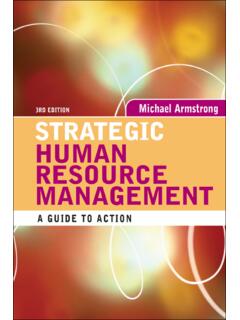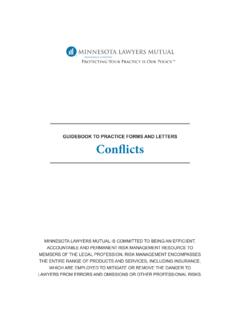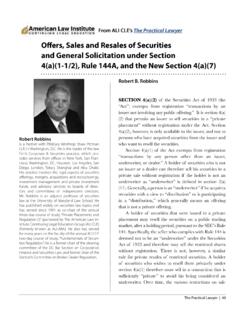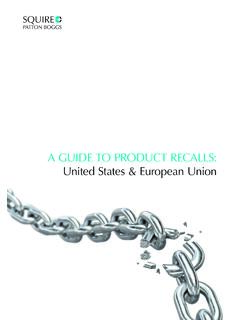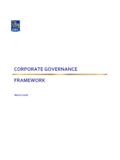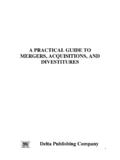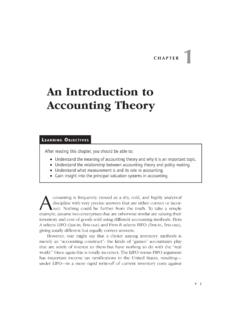Transcription of CORPORATE STRATEGY - MIM
1 Advanced Diploma in Business Administration Study Manual CORPORATE STRATEGY The Association of Business Executives William House 14 Worple Road Wimbledon London SW19 4DD United Kingdom Tel: + 44(0)20 8879 1973 Fax: + 44(0)20 8946 7153 E-mail: Copyright assigned to ABE All rights reserved No part of this publication may be reproduced, stored in a retrieval system, or transmitted in any form, or by any means, electronic, electrostatic, mechanical, photocopied or otherwise, without the express permission in writing from The Association of Business Executives. ABE Advanced Diploma in Business Administration Study Manual CORPORATE STRATEGY Contents Study Unit Title Page Syllabus i 1 An Introduction to CORPORATE STRATEGY 1 What is STRATEGY ?
2 2 Levels of STRATEGY 4 The Strategic Management Process 6 Patterns of Strategic Development 8 Strategic Management and Business Planning 10 Strategic Management in Different Contexts 13 2 Strategic Analysis 1: (The External Environment) 17 CORPORATE Planning 18 Environmental Analysis 19 Competitor Environmental Analysis 21 Interpreting Environmental Analysis 28 Tools for Competitor and Market Analysis 31 3 Strategic Analysis 2: (The Internal Environment) 39 Resources, Comptetencies and Strategic Capability 40 The Process of Internal Appraisal 41 Techniques for Conducting an Internal Appraisal 45 Interpreting Internal Appraisal 54 4 Strategic Development and the Bases of Strategic Choice 57 Strategic Development Options 58 Basis of Strategic Choice 1 61 Basis of Strategic Choice 2 64 Basis of Strategic Choice 3 68 5 Strategic Direction and Methods of Development 73 Alternative Strategic Directions 74 Alternative Methods of STRATEGY Development 85 6 STRATEGY Evaluation and Selection 89 Evaluation Criteria 91 Strategic Fit and Synergy 92 Assessing Suitability 92
3 Assessing Acceptability 99 Assessing Feasibility 102 Selection of Strategies 106 Selection of Mission Statements and Key Objectives 107 7 Implementation and Control 1 Organisation 111 The Concepts of Strategic Architecture and Control 112 The Important of Organisationl Design and Structure in STRATEGY Implementation 112 Alternative Organisational Structures 115 Influences on Organsiational Design 118 Issues in Organisational Design 120 8 Implementation and Control 2 Resources 129 The Role, Scope and Importance of Resources in Strategic Implementation anc Control 130 Resource Configuration 131 Resource Plans 138 Information as a Resource 144 9 Managing Strategic Change 149 What Constitutes Change and the Organisational Processes Involved 150 Types of Stratic Change 153 Diagnosing Change Needs 154 The Four Areas of Designed Change 157 Managing Change Processes 161 Roles in Change Processes 167 10 Issues and Developments in Modern CORPORATE STRATEGY 171 The Growth of International Trade.
4 Concept of Globalisation 172 Stages in the Development of International Organisations 175 Strategic Issues 178 Social Responsibility 181 Business Ethics 182 Environmental Issues 185 i Licensed to ABE Advanced Diploma in Business Administration CORPORATE STRATEGY Syllabus Aims 1. Structure complex strategic problems and propose logical solutions. 2. Apply the full range of techniques and concepts available to the contemporary CORPORATE planner. 3. Analyse, assess, and choose between strategic alternatives. 4. Understand the financial, human, and organisational issues which affect the successful development and implementation of CORPORATE strategies and plans.
5 5. Incorporate contemporary issues and developments affecting organisations into CORPORATE plans. 6. Assess the impact and implications of international and global issues on the CORPORATE strategic planning process. Programme Content and Learning Objectives: After completing the programme the student should be able to: 1. The nature, scope and need for CORPORATE STRATEGY . Some key concepts in CORPORATE strategic planning: The nature and importance of CORPORATE strategic planning in today s organisation. The various definitions and models of CORPORATE STRATEGY and planning and the characteristics of CORPORATE strategic decisions compared to other levels of strategic planning and decision-making in the organisation. The various elements involved in the development of CORPORATE STRATEGY and some of the key concepts and vocabulary used by today s CORPORATE strategists.
6 2. CORPORATE STRATEGY in practice: The application of CORPORATE STRATEGY in various types of organisational settings and how CORPORATE strategies develop in different organisations. STRATEGY development for: small businesses, manufacturing and service organisations, public sector organisations, voluntary and not-for-profit organisations, professional service organisations, innovatory organisations and multinational corporations. Different patterns of STRATEGY development, including intended versus realised strategies, pre-planned versus emergent strategies and imposed STRATEGY development. Factors affecting STRATEGY development in the organisation and challenges for STRATEGY development including uncertainty and the notion of strategic drift. 3. Analysis for CORPORATE planning: Types of analyses required for CORPORATE planning decisions.
7 Environmental analysis including, for example, PEST and the identification of key environmental drivers. The steps and stages in environmental analysis, together with techniques for auditing and forecasting the environment. In addition, the competitor environmental analysis is included, encompassing strategic group analysis, the analysis of competitive market structure, and competitor based strategies including strategies for market leaders, market followers and market challengers. Finally, in this part of the syllabus, internal analysis is considered, including the assessment of strengths and weaknesses, value chain analysis, comparative analysis and benchmarking, financial analyses and identifying core competences and critical success factors. ii Licensed to ABE 4.
8 Identifying strategic options: The range of strategic options and decisions which the CORPORATE planner must assess. First, the identification and selection of alternative mission statements and key objectives for the organisation. The nature of mission statements and the importance of business definition together with the range of possible objectives and goals which the CORPORATE planner may select between. Factors affecting the selection of objectives including the role and influence of stakeholders and shareholders. Options for strategic direction from consolidation to exit strategies, including Ansoff s Product Market Matrix. Methods of strategic development including internal development, mergers and acquisitions, and joint developments and strategic alliances are introduced.
9 Finally this part of the syllabus will also consider the bases of strategies, competitive advantage ranging from cost and price based strategies, added value strategies, differentiation strategies, through to focus and hybrid strategies. 5. STRATEGY evaluation and selection: The range of concepts and techniques in evaluating and selecting between strategic options. The criteria of suitability, acceptability and feasibility in STRATEGY evaluation and selection. Included in the techniques of STRATEGY evaluation and selection are: decision tree analysis, STRATEGY screening, risk analysis and techniques of financial analysis. Key concepts of STRATEGY evaluation and selection include the concepts of strategic fit and synergy. Finally, the different processes for selecting strategies are considered, encompassing how strategic choice and selection of strategies can be undertaken within organisations.
10 6. Implementing and controlling strategies: Factors affecting the implementation and control of CORPORATE strategies. The determination of policies, procedures and budgets, together with the design of different organisational structures which may be used to implement strategies including those for multinational/global organisations. Resource configuration and resource allocation and control, including the use of information as a control. 7. Tools and techniques for the CORPORATE strategist: The range of contemporary techniques and tools available to the CORPORATE strategist together with their limitations. The variety of tools which have specifically been developed to aid the CORPORATE strategist in the identification, selection and evaluation of strategies. The following are considered to be examples of important tools and techniques for today s CORPORATE strategist: BCG s Growth Share Matrix, Directional Policy Matrices including the General Electric (GE) and Shell Matrices, Porter s Industry/Market Evolution Matrix, A D Little s Competitive Position/Industry Maturity Matrix, the Parenting Matrix, PIMS Technique, the Experience Curve Concept, and GAP Analysis.








